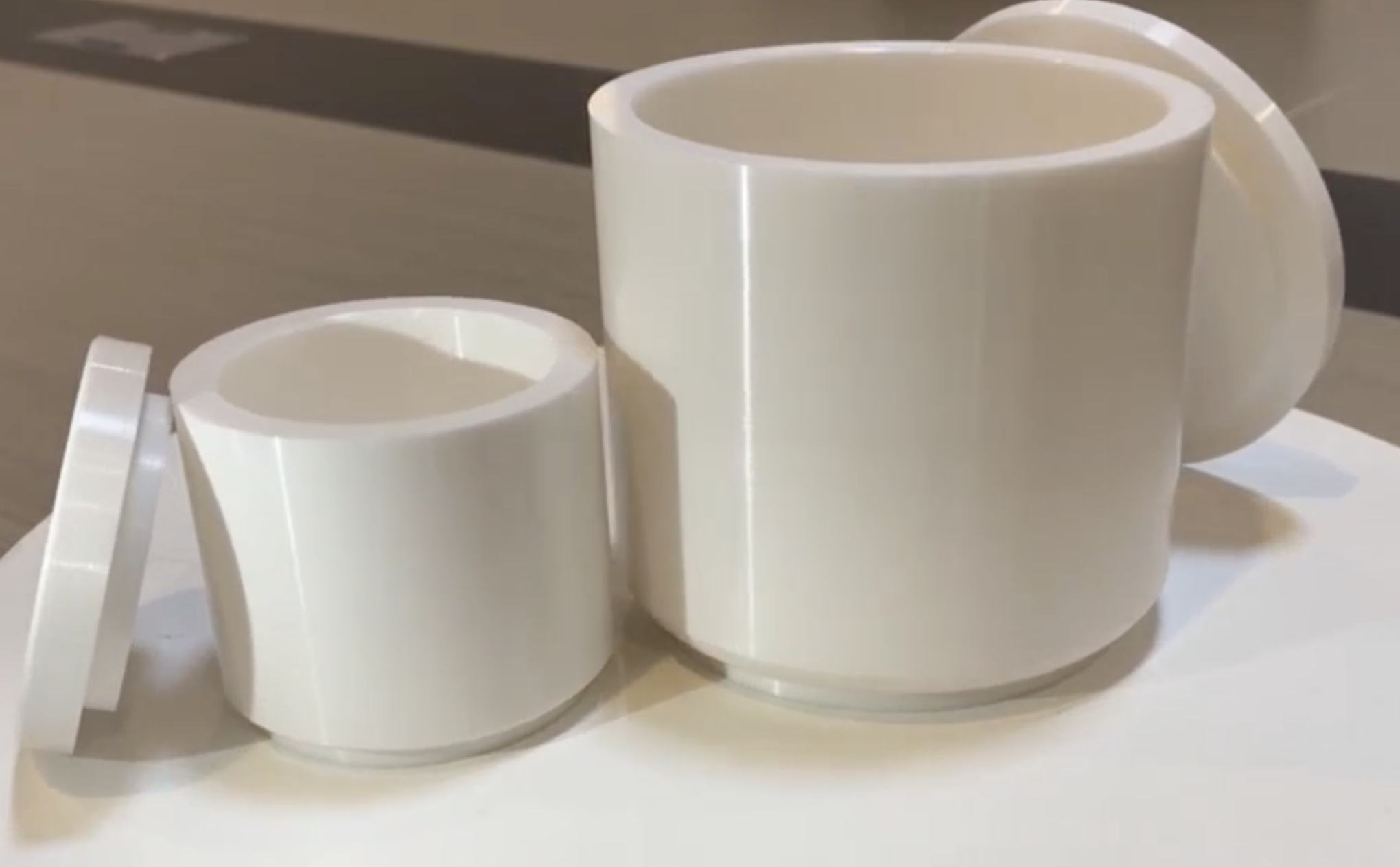Overview: The Gold Standard for Contamination-Sensitive Milling
Stabilized Zirconium Dioxide (ZrO₂), commonly known as Yttria-Stabilized Zirconia (YSZ), represents one of the most advanced and widely used materials for grinding jars in applications where minimal contamination and high mechanical strength are critical. They are engineered ceramics designed to withstand the severe mechanical and thermal stresses of high-energy milling.


Key Characteristics and Material Science
1. Stabilization: The Secret to its Toughness
Pure zirconia undergoes a destructive phase change (from tetragonal to monoclinic) during heating and cooling, leading to cracking. To prevent this, it is "stabilized" by adding metal oxides, most commonly:
- Yttria (Y₂O₃): Creating Yttria-Stabilized Zirconia (YSZ). This is the most prevalent type for milling jars.
- Magnesia (MgO) or Ceria (CeO₂): Used in other specific grades.
This stabilization process results in a transformation toughening mechanism. When a stress (like an impact from a grinding ball) is applied, the zirconia particles at the stress point undergo a microscopic phase change that expands, effectively compressing the developing crack and preventing it from propagating. This gives YSZ its exceptional fracture toughness.
2. Exceptional Material Properties
- Extreme Hardness: Typically > 1250 HV (Vickers Hardness), making it highly resistant to wear and abrasion from hard powders and grinding media. It is significantly harder than steel.
- High Fracture Toughness: YSZ has the highest toughness of all advanced ceramics, making it far more resistant to chipping and catastrophic failure compared to Alumina or Agate.
- High Density (~6.0 g/cm³): This is a key advantage over other ceramics. The high density allows the jars and balls to impart greater impact energy to the powder charge, leading to more efficient milling and shorter processing times.
- Low Thermal Conductivity: Acts as a thermal barrier, which can help contain the heat generated during milling.
- Excellent Chemical Inertness: Highly resistant to acids and alkalis, making it ideal for wet milling with various solvents and for processing corrosive materials.
Advantages of YSZ Jars
- Ultra-Low Contamination: This is their primary advantage. The wear debris introduced into the sample is primarily ZrO₂, which is:
- Chemically Inert: It will not react with most material systems.
- Electrically Insulating: Critical for electronic and semiconductor materials.
- White/Opaque: Often visually non-intrusive.
This makes YSZ ideal for synthesizing high-purity materials like advanced ceramics, battery electrodes, catalysts, and pharmaceuticals.
- Superior Wear Life: The combination of high hardness and high toughness means YSZ jars have an exceptionally long operational lifespan, outlasting other ceramic jars like Alumina by a significant margin, providing better long-term value.
- High Milling Efficiency: The high density of YSZ grinding balls results in higher kinetic energy per impact compared to other ceramics, leading to faster particle size reduction, alloying, or mechanochemical reactions.
- Smooth, Non-stick Surface: The sintered ceramic surface is very smooth and can be polished to a mirror finish, which minimizes powder adhesion and makes cleaning easier.
Disadvantages and Considerations
- Cost: YSZ jars are significantly more expensive than steel or alumina jars, though less expensive than tungsten carbide. They are an investment.
- Residual Contamination: While contamination is minimal, it is not zero. For applications where even trace amounts of Zirconium are unacceptable (e.g., certain spectroscopic standards), Agate might be the only choice.
- Weight: Heavier than other ceramics, which can be a factor for very large jar sizes.
- Thermal Shock Resistance: While good, it is not infinite. Rapid and extreme temperature changes (e.g., taking a hot jar from the mill and placing it in cold water) should be avoided to prevent cracking.
Primary Applications
- Nanomaterial Synthesis: Production of metal oxide nanoparticles, graphene, and CNT composites.
- Battery Material Research: Grinding and mixing of cathode/anode materials (e.g., NMC, LFP) and solid electrolytes where iron or cobalt contamination would be catastrophic.
- Pharmaceuticals: Size reduction and amorphization of active pharmaceutical ingredients (APIs).
- Advanced Ceramics: Processing of technical ceramics (e.g., SiC, AlN) before sintering.
- Mechanochemistry: Conducting solvent-free chemical reactions.
- Metallurgy: Mechanical alloying of non-ferrous metal systems.
Compatible Grinding Media
For the best performance and to minimize contamination, YSZ jars must be used with Yttria-Stabilized Zirconia (YSZ) grinding balls. Using a different material (e.g., Alumina balls in a YSZ jar) will cause rapid, asymmetrical wear and cross-contamination.
Operational Guidelines and Best Practices
- Loading Volume: Do not exceed ⅓ to ½ of the jar's total volume with the total charge (powder + grinding media). Overfilling reduces milling efficiency and increases wear.
- Grinding Media Size: Use a range of ball sizes for efficient milling (e.g., a mix of 10mm and 5mm balls).
- Cleaning: Clean thoroughly between uses with a mild detergent and water or an appropriate solvent. An ultrasonic bath is highly effective. Ensure the jar is completely dry before storage.
- Inspection: Regularly inspect the jar and lid for any signs of chipping, cracking, or excessive wear.
Summary Comparison vs. Other Jar Materials
| Feature | Yttria-Stabilized Zirconia (YSZ) | Alumina (Al₂O₃) | Hardened Steel | Tungsten Carbide (WC) |
| Contamination | Very Low (ZrO₂) | Very Low (Al₂O₃) | Very High (Fe, Cr) | Medium (W, Co) |
| Fracture Toughness | Very High | Low (Brittle) | Very High | High (but brittle) |
| Hardness | High | High | Very High | Extreme |
| Density | High | Medium | Very High | Extreme |
| Best For | General R&D for sensitive materials | Chemical inertness, lower cost | Iron-alloys, non-sensitive materials | |


